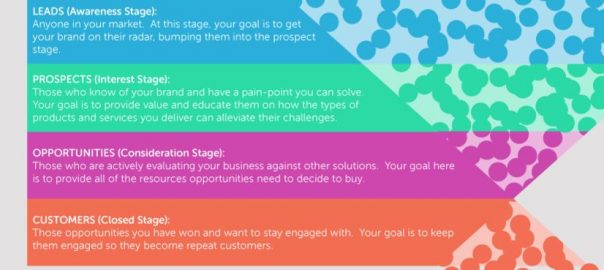If you’ve ever contemplated purchasing a specific item on Amazon and then later seen an ad for that exact same product pop up on Facebook, you’ve witnessed a prime example of display retargeting. This effective advertising method convinces interested consumers to reconsider potential purchases — and it captures conversions that otherwise may have been lost.
Display retargeting is an essential tactic in your integrated marketing campaigns. Instead of losing a website visitor after they visit your site, they get little reminders of your brand after they’ve closed the window.
The following suggestions will help you make the most of small business display retargeting:
Choose Your Platform
To get your display retargeting ads out in the wild, you will first need to choose the right platform for your needs.
Perfect Audience is an easy to use platform where you can get your mobile, web, and Facebook retargeting ads live. What we love about Perfect Audience is the ability to serve ads to leads who opened and clicked on our marketing emails – allowing for a streamlined and targeted integrated campaign.
Adroll is the most popular retargeting service on the market. Adroll provides mobile, web and social media retargeting They offer cutting-edge targeting technologies to get you even closer to your target audience. Adroll establishes a high quality standard in order to for your retargeting ads to be approved.
ReTargeter is a great solution if you need aid getting up and started. You receive a dedicated account manager to help you through the process of getting your mobile, web, and social media retargeting ads up and optimized.
Google Display Network is a division of their Adwords platform. Like Adwords, you have to sift through all the Google noise to set-up your campaigns. You will also be limited to strictly the Google Display Network.
What does your retargeting strategy look like? What are your goals? The platform you choose will be determined by your retargeting strategy and goals.
Segment Your Audience
Different types of visitors behave differently on your site. Their behavior may be indicative of how they will respond to different display retargeting campaigns. Through audience segmentation, you can target ads based on how visitors have engaged with your site in the past.
For instance, you may have 3 calls to action on your site: download a white paper, learn more about your product or services, and speak with your sales team. Each of these actions place the website visitor in a specific stage of the sales funnel: top, middle, and bottom, respectively. Your display ads should reflect the sales funnel and offer targeted information – top of funnel leads will receive an ad campaign with a CTA to download a resource, middle will receive a CTA to learn more, and so on.

But, Avoid Over-Exposure
Targeting customers who initially failed to convert can be effective, but only up to a point. Eventually, you need to recognize when a customer is not a potential convert, but rather, a lost cause. If, after repeated exposure to your brand, a consumer fails to make a purchase, you risk scaring this prospect away for good with additional ads. Sometimes, if you back off, customers will come around on their own and decide to return to your site. Specific frequency caps will vary somewhat depending on the goal of your campaign, but in general, it is best to avoid showing a website visitor more than twenty ads in a single month.
Create Quality Content and Clear Calls to Action
High-quality content is just as imperative for display retargeted ads as it is for blog posts and social media updates. The ideal ad features concise content that immediately grabs the reader’s attention. Additionally, a clear, engaging call to action is needed to convince readers to take the next step and return to your website.
The first step to creating quality ads is to get the right sizes. The dimensions you’ll run into the most are as follows:
- 300×250 Rectangle
- 160×600 Skyscraper
- 728×90 Leaderboard
You’ll want to choose a theme that will be present on all your ads through the sales funnel. Your display ads should tell a story. As the lead goes through the funnel, the ads will change with it. With retargeting pixels, you can drill your campaigns down to exclude or include certain people who visited or didn’t visit a page on your website. This will help you write relevant copy on each ad.
Once you get your theme down, your copy and images for each individual ad size is created. To put together sharp looking ads, use an easy-to-use design tool like Canva if you don’t have access to Adobe Photoshop.
Analyze Your Data and Optimize
As you set up your display retargeting campaigns, set relevant goals for each to you can track the success of your campaigns. Listed below are the metrics to measure to track the success of each campaign objective:
- Brand Awareness: Impressions
- Engagement: Clicks
- ROI: Conversions, Cost per Conversions
Optimize your display ads and check up frequently on campaign performance in your display advertising platform.
Conduct A/B Tests
No one display format will work best for all businesses. Thus, some experimentation may be necessary to determine what ad size and type of content is an ideal fit. Other factors worth considering include headlines, theme, images, background colors, and calls to action. Through disciplined A/B testing, you will discover that even incremental changes can have a huge impact on your retargeting campaign.
If you struggle with uninterested first-time website visitors, retargeting may be the solution. Don’t be afraid to dive in and experiment with a variety of display retargeting approaches — you just might stumble upon your most effective ad campaign yet.
Business & Finance Articles on Business 2 Community(37)
Report Post






